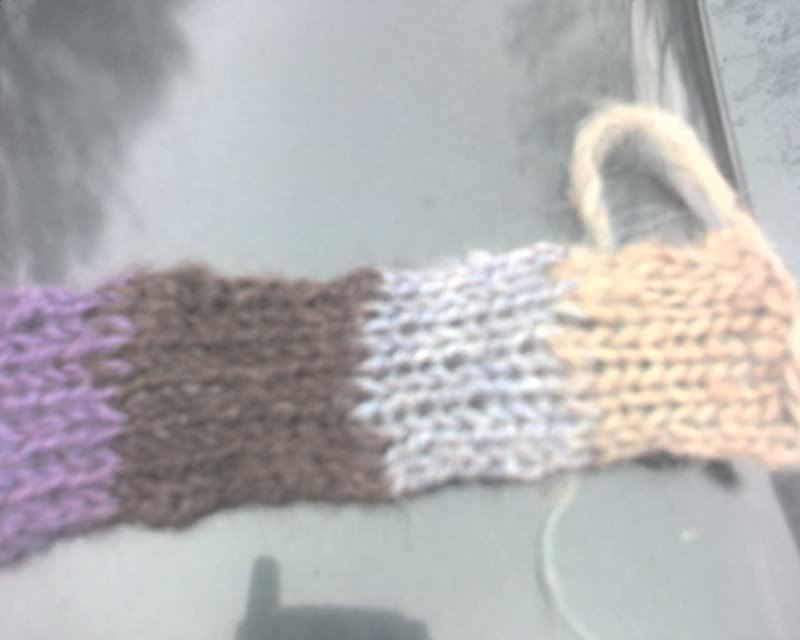(I've been translating Caesar's "De Bello Gallico" for the last week...) :D
So the indigo adventures continue...
I took the pot out when I got home from class and the coppery film on the surface is less than it was, but the liquid beneath the surface is still yellowish-green, so it's still working. I'm not sure exactly what the coppery film is supposed to indicate other than it is initially ready to dye, and I have no clue if it's normal for it to go away with use.
I re-dipped the cotton that I did yesterday, to see if it would get darker. It didn't really, being pretty dark to begin with...
See, this is what it looked like dry after one dipping:

Then I did the wool pokeberry errors. One skein I had tried to overdye last week with food coloring, and another that was just messed up pokeberry. The one that I tried to overdye with food coloring turned a dark teal, and the one that was just pokeberry turned a dark, forest-like green. I was expecting maybe purple, but perhaps because the red/pink of the pokeberry is not permenent and actually washes out to a yellow-orange-brown kind of color that would explain the greens I got... I dunno. But they are a marked improvement on the nasty, uneven colors they were before.
 The skein on the left is the one that was just pokeberry. The one on the right was pokeberry overdyed with food coloring...
The skein on the left is the one that was just pokeberry. The one on the right was pokeberry overdyed with food coloring...No matter what I did with the wool, no matter how saturated it was with water before it went in and no matter how many times I tried to push it down into the dye bath, it would always come back to the top and it seemed it was quite happy to just sit there...

Then I tried one skein of white wool. And I got a pretty middle kind of blue.
These are the rest of the photos I got of the yarn I dyed today. From left to right in each photo, they are the pokeberry, the pokeberry overdyed with food coloring, the kitchen cotton, and the plain white wool:




Oh! I should note a few things about what I've learned from dyeing with indigo in the last couple of days.
1.) You have to wet the fibers first to get a more even color saturation and also to reduce the amount of oxygen that is put into the dyepot.
2.) No matter how wet the fibers are though, you're going to get some air in there.
3.) Even though pre-reduced indigo seems to ferment very quickly, if you're dyeing a lot in one day, it's still better to pull fibers out at an angle and let the dye drip out of the pot. There's a lot of waste when dyeing with indigo - at least it seems so to me - and there's not much to be done about it.
4.) For the above reason, it's better to use this dye method over grass rather than concrete, if you don't want your driveway stained until the indigo eventually washes away.
5.) Dyeing with indigo is a lot easier than a lot of the things written about it would have most people believe. You don't have to keep the pot hot. If you use the Yeast-Ammonia Fermentation Method, you don't have to use anything stronger than regular household ammonia. It's not an exact science... since I messed up calculations royally, and it still seemed to work just fine. It doesn't smell unless you stick your nose in it after the first day or so (at least my dyepot doesn't stink of yeast and ammonia anymore unless I'm sitting right next to it with my face near it). And you get such pretty colors!
I'm really happy with how it's turned out so far... But tomorrow, there will be rinsing... Stay tuned...
















